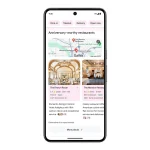Mastodon has introduced clickable author bylines linking to profiles across the fediverse, simplifying audience connection for journalists while better highlighting writers for readers.
Mastodon aims to transform writer-reader relationships and strengthen journalism’s future viability through newly introduced clickable bylines. These links connect posted articles to authors’ profiles across social platforms, enabling readers to easily follow and contact creators.
Empowering Journalists Across the Fediverse: Mastodon’s New Built-In Bylines
Mastodon, the open-source, decentralized social media platform, has rolled out an innovative new feature aimed at supporting journalists and content creators across the fediverse – clickable bylines that link to authors’ profiles. This latest addition has exciting implications for journalism in the digital age.
Why Mastodon Created This Tool
As part of its commitment to an open web and media decentralization, Mastodon wanted to provide stronger attribution for writers while facilitating connections between journalists and readers across different platforms. By enabling one-click access to contributor profiles on Mastodon, Threads, Flipboard and more, the new bylines foster transparency and audience engagement.
Some key goals behind Mastodon’s introduction of built-in bylines include:
- Increasing article views and visibility for journalists by making their Mastodon profiles accessible.
- Simplifying discovery of a writer’s body of work across the fediverse’s varied sites and apps.
- Promoting platform interoperability through profile linking.
- Offering readers more context on article creators.
- Streamlining audience growth for writers leveraging Mastodon alongside other tools.
So both creators and consumers stand to benefit from this user-centric design choice intended to reflect today’s fragmented but increasingly interconnected online media landscape.
A Closer Look at How The Bylines Work
Technically speaking, the new bylines rely on a custom OpenGraph metadata tag that Mastodon devised. When implemented on a publisher’s site, this tag allows display of the writer’s fediverse account with their posted articles on Mastodon.
Some examples in action so far include:
- The Verge stories featuring one-touch links to authors’ Mastodon, Threads or other profiles.
- MacRumors articles empowering readers to easily connect with contributors.
- MacStories content enabling fans to follow writers across platforms.
To browse a writer’s profile, users simply click the byline below the headline which instantly redirects them, providing an intuitive bridge between sites to learn more about journalists and dive into their catalogs.
Gradual Rollout Process
For now Mastodon is strategically enabling bylines on select partner websites, prioritizing manual vetting to protect readers from misinformation while working towards more automated integration.
Moving forward however, they aim to introduce a self-serve dashboard so writers anywhere can seamlessly link their profiles to published articles without administrative approval delays. This could exponentially increase adoption among niche blogs, indie news outlets and freelancers.
Additionally, as users realize benefits from author-focused browsing, Mastodon plans to expand bylines beyond just text articles – applying the same principles to photo galleries, videos, podcasts, research papers and more. This helps cement attribution practices while demonstrating respect for intellectual property rights.
So rather than a flashy one-off feature release, introducing clickable fediverse profiles is the first phase in a long-term commitment to recognizing digital creators across mediums and celebrating their contributions to public knowledge.
Transforming Writer-Reader Relationships
What makes Mastodon’s byline integration especially timely and socially impactful is its alignment with modern journalism’s audience-centric mindset shift. This accompanies the industry’s accelerated migration online paired with increased competition among endless content options.
To cut through the noise, outlets and journalists alike must forge direct, meaningful connections with their communities. And this goes beyond chasing clicks to foster loyalty through relevance to readers’ lives coupled with responding to feedback.
Incorporating bylines meshes perfectly with digital news’ renewed emphasis on accessibility, reciprocity and transparency in service of readership. Clicking an author’s name allows instant access to contact or follow them, taking engagement to the next level.
While social was once an afterthought or add-on, integrating author identifiers on articles makes interacting with the writers themselves an organic discovery step. This parallels journalism’s recognition that long term success hinges on the strength of human relationships, not just scoring viral hits.
Broader Impacts on Journalism’s Future
Looking big picture, Mastodon’s built-in bylines represent an investment in the continued viability of public interest journalism itself. With traditional revenue streams disrupted and local news in crisis, creative solutions centered on readers, writers and grassroots communities are essential to sustainability.
Features like clickable profiles that traverse platform divides help strengthen the fabric that will allow ethical reporting to endure and evolve in the digital ecosystem. Moving forward, expect to see more experiments in this vein as legacy institutions and startups alike seek new ways to champion quality storytelling while empowering diverse voices.
In the fediverse alone, imagine bylines accelerating formation of beat-specific journalist hubs, unlocking niche-based readership growth with focused targeting help. Or a cascading network effect where fans browse bylines to discover their new favorite experts.
We may even see reputational indices akin to the academia’s h-index for citing scholarly influence. This could help quantify journalism contributions for funding or job opportunities, allowing individual writers to take ownership of their impact.
Of course tracking metrics could also introduce unhealthy competition dynamics. So maintaining an emphasis on cooperation over clicks in this decentralized landscape, where independent platforms co-exist rather than compete, will be important as we build the tools of tomorrow.
Key Takeaways and Action Items
Mastodon’s addition of fediverse-traversing author bylines has multifaceted upsides for writers looking to augment audience engagement, demonstrate transparency, simplify attribution tracking and future-proof journalism careers.
Specific action items include:
For Journalists:
- Claim your Mastodon profile via their official site or apps.
- Reach out to publications you write for suggesting byline integration.
- Strategize long-term platform diversification and audience community building.
For Publication Teams:
- Evaluate adding OpenGraph tags to display authors’ fediverse profiles.
- Discuss opportunities to further support contributors through decentralized infrastructure.
- Assess risks around platform interlinking and data sharing policies.
For Readers:
- Click on article bylines you see to browse authors’ perspectives and extended works.
- Provide feedback on the utility of being able to directly engage writers.
- Support quality journalism by participating in outlet membership programs or contributing financially to writers you appreciate!
While still in early stages, Mastodon’s investment in connecting authors and readers represents an exciting step towards realizing the liberating potential of decentralized social technology. By remixing features to meet previously unmet needs, we move closer to a more collaborative, creative and informed digital public sphere.
Try out the convenient new bylines today to explore journalists’ broader works or directly engage them! Also be sure to support quality outlets and writers financially or through sharing quality content.






